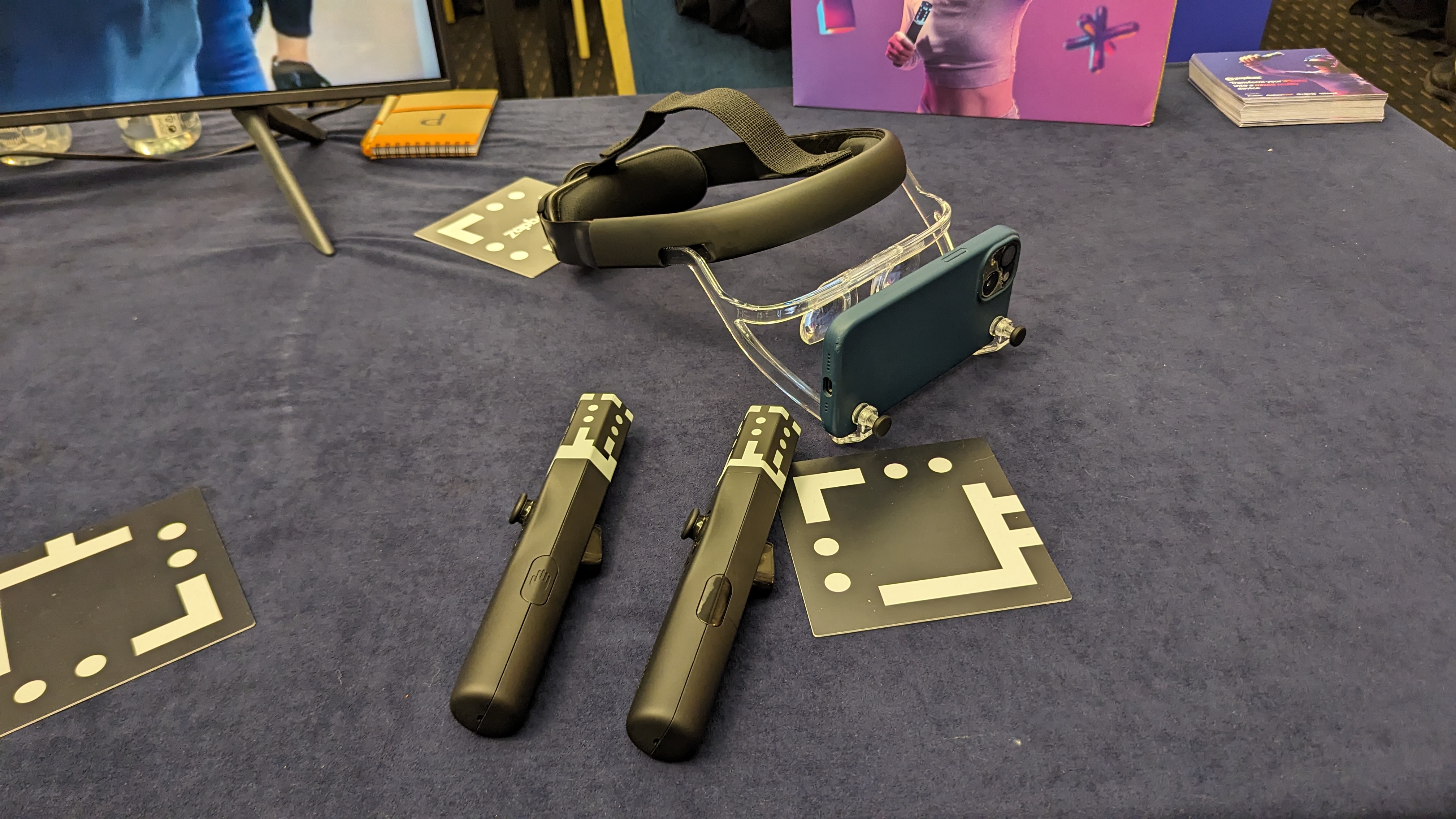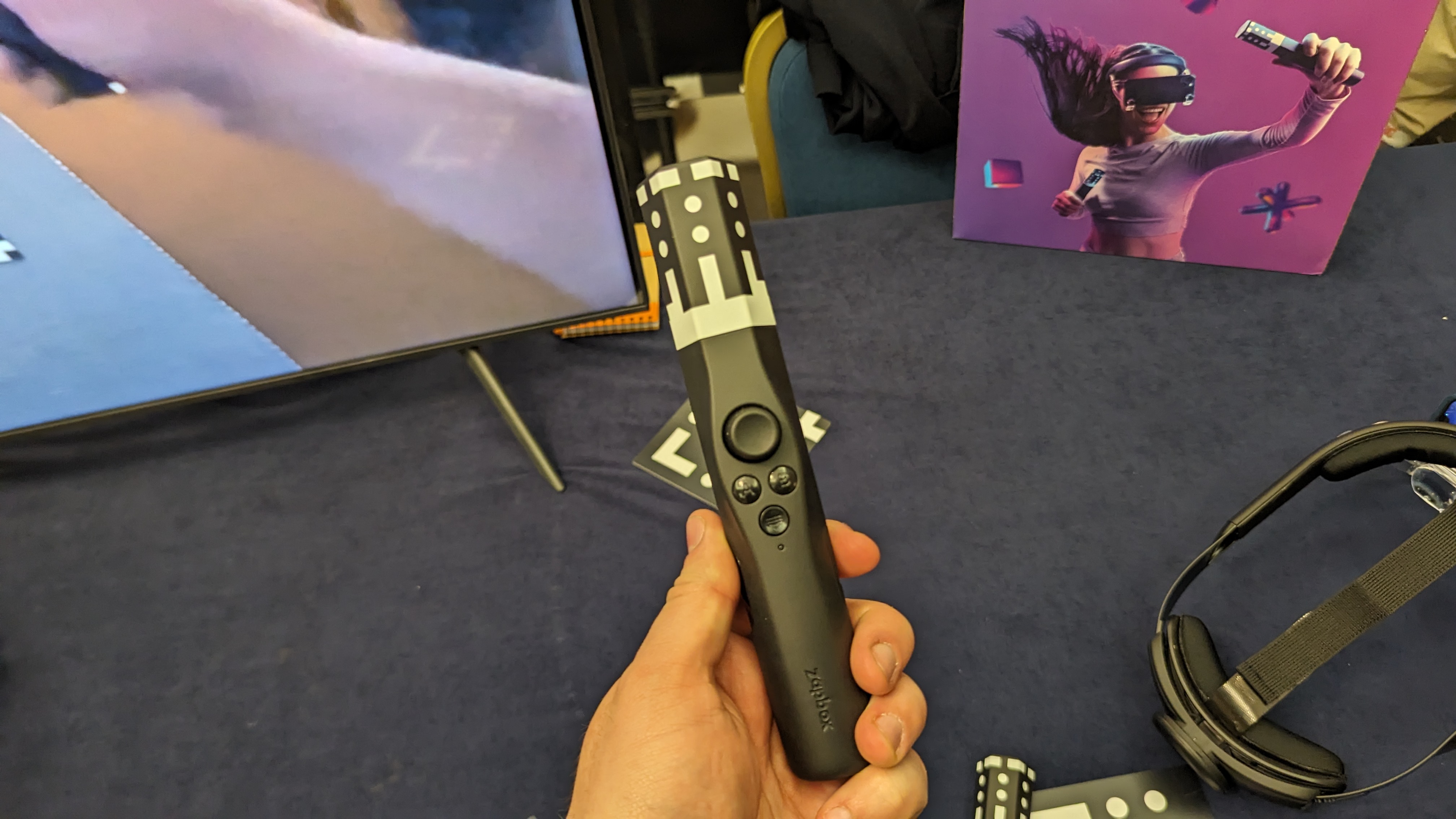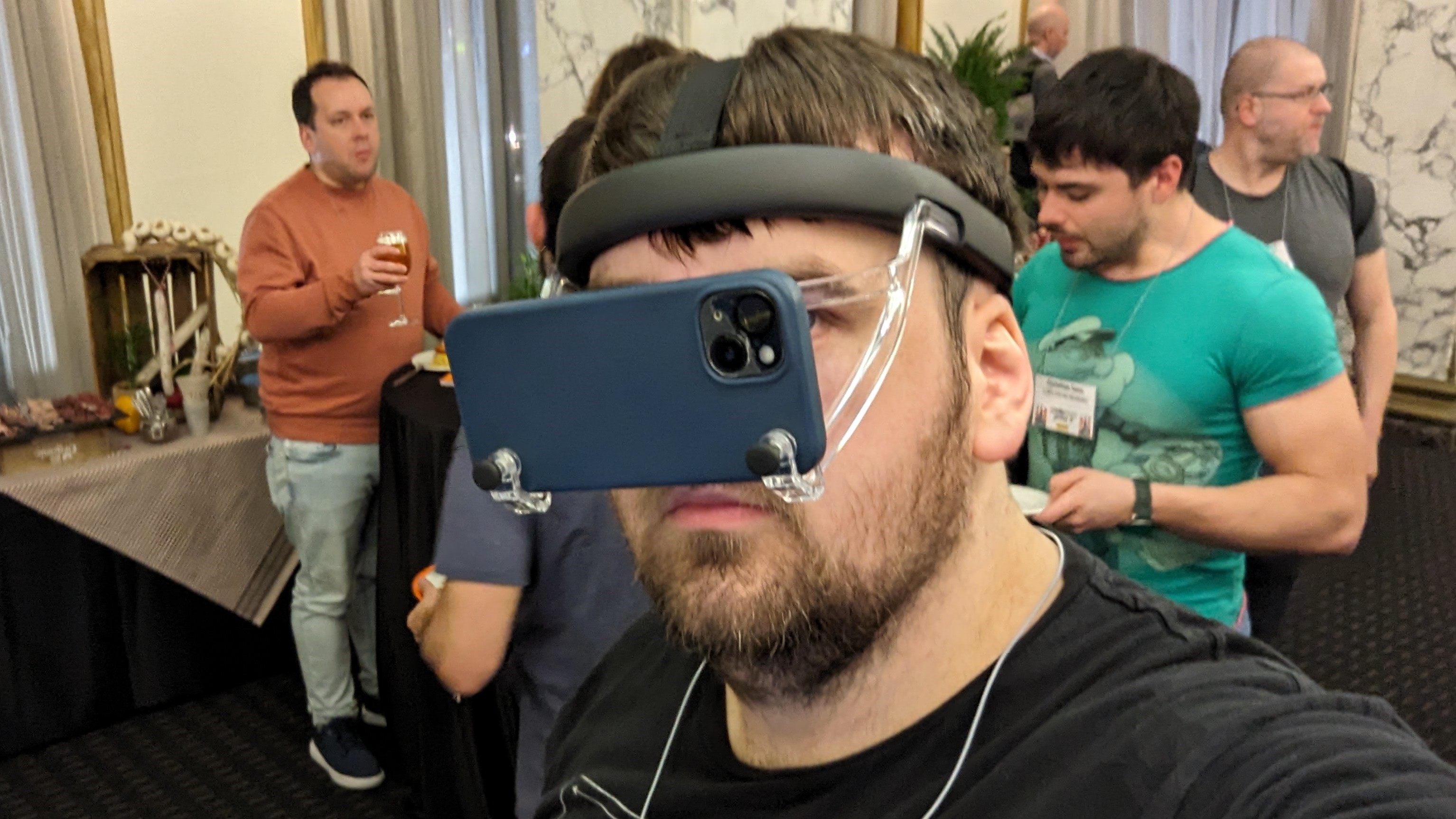Can’t afford the Apple Vision Pro? This $100 headset turns your iPhone into a mixed reality portal
Mixed reality powered by your phone, not an expensive headset

As groundbreaking as the Apple Vision Pro feels right now, there’s no denying the fact that it is absurdly expensive. $3,500 is not a small amount of money for a new device, and it’s definitely not the most appropriate way for the masses to experience augmented reality. But what if there was a cheaper way?
The ZapBox headset is essentially a frame for your iPhone, letting you use your smartphone for mixed reality experiences. And i got to spend some time with it at MWC 2024.
The idea is that you already have a smartphone, and you should be able to take advantage of its power and display capabilities. The fact that the iPhone does all of the grunt work means that it doesn’t cost very much either — just $100.
The headset itself is about as low tech as you can get these days. It consists of an adjustable headband, a pair of lenses and a stand that holds your iPhone in front of your eyes. Simply load up the app you want to see, pop it into the stand and pull the headset onto your head. You also get a pair of Bluetooth controllers, which are what actually let you interact with ZapBox-friendly apps.
The really cool thing, however, is the actual passthrough mixed reality itself. It’s clear that you’re both looking at a phone screen up close, and seeing a feed from the camera rather than real life Pass-through AR experiences often have that static-like haze over the image, and the ZapBox was absolutely no exception. But the really incredible thing was that there was no noticeable lag involved.

I tested this by holding my hand in front of my face and spinning it around. Every time I moved, the image of my hand moved in unison - and I genuinely couldn’t spot any kind of delay.
Unfortunately this is also why the headset and apps will only work with iPhones. Apparently Android phones don’t quite have the refresh rate requirements needed to offer that smooth lag-free video feed, so the juddering just ends up taking you out of the experience.
I found using the ZapBox apps a bit more hit and miss, with tracking occasionally losing sight of the controllers and what I was trying to do. It was the same situation in Block Builder and Open Brush, experiences that are built around building with blocks and creating 3D artwork in AR.
I suspect that may just be to do with the limited free space in the demo area, and I was probably getting too close to virtual objects for the camera to figure things out correctly. So making sure you have plenty of free space will probably solve the problem.

I also found the nose grips were a little fiddly to position correctly in a pinch, and time constraints certainly didn’t help. But once I did manage to get them in the right place, the ZapBox was pretty nice to wear. Plus it didn’t mess up my hair at all, which is pretty impressive considering everything else seems to want to make me look like some kind of human porcupine these days.
Sure, we’ve all heard these kinds of promises before. The idea that you can use your smartphone as a VR headset, rather than spending hundreds of dollars on a dedicated piece of kit. Google Cardboard, Samsung’s Gear VR, the Lenovo Mirage and all the others tried and failed for one reason or another. What’s to stop the same thing from happening again?

It’s difficult to say, but ZapBox-makers Zappar seem to be putting a lot into making the headset a success. They told me that they’ve been using the headset to push a new method of app development, which is simpler and more open to letting amateur developers create their own AR experience.
Anyone that saw the demise of Windows Phone knows that app support can make or break a platform, so the more software that's available, the better. And apparently Zappar has proven popular for educational and professional training purposes alongside the more traditional games and MR experiences you’d expect.
Apparently a lot of those experiences are freely available on the App Store. But like all apps, the developers can choose to charge you for them if they want to.
Proper spatial computing is a little far off, though. I did ask, and was told that maybe it’ll happen one day, but for now there isn’t really adequate hand tracking to make ZapBox spatial computing a reality. So if you want that, you’re just going to have to find enough money to pick up a more expensive headset.
More from Tom's Guide
Sign up to get the BEST of Tom's Guide direct to your inbox.
Get instant access to breaking news, the hottest reviews, great deals and helpful tips.

Tom is the Tom's Guide's UK Phones Editor, tackling the latest smartphone news and vocally expressing his opinions about upcoming features or changes. It's long way from his days as editor of Gizmodo UK, when pretty much everything was on the table. He’s usually found trying to squeeze another giant Lego set onto the shelf, draining very large cups of coffee, or complaining about how terrible his Smart TV is.
